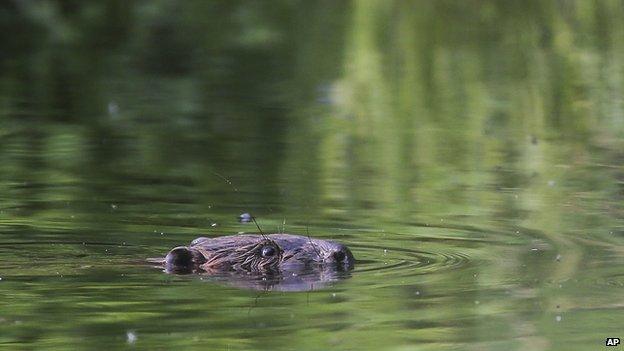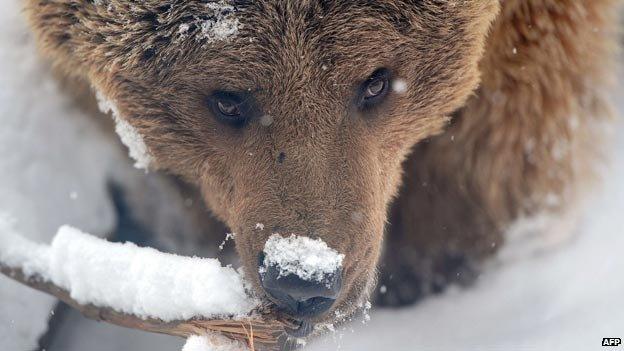Park life: The Cairngorms' lost beasts
- Published

Beavers were hunted to extinction in the Cairngorms in the 16th or 17th centuries
The Cairngorms National Park Authority says beavers could potentially be reintroduced to the area, but what else has the organisation considered bringing back?
Beavers could one day return to the Cairngorms where they are thought to have been hunted to extinction in the 16th or 17th centuries.
The Cairngorms National Park Authority (CNPA) said exploring the idea further depends on the results of a trial reintroduction at Knapdale in Argyll.
But beavers are just one animal on a list of 22 creatures assessed for potential reintroduction, or targeted conservation efforts, to Britain's largest national park.
Wildlife on the list were either were wiped out because of over-hunting or persecution, or are now rarely seen because of habitat loss.
They include rare birds such as nightjar and crested tit, but also brown bears, elk, reindeer and even an animal that is globally extinct.
Aurochs, ancient giant European wild cattle, died out almost 400 years ago.
It features on the list to highlight the role free-roaming cattle can play in ecosystems.
In his report published in February on the potential restoration of the 22 species, CNPA's ecological advisor Dr David Hetherington noted the use of cattle at Belgian, Danish and Dutch nature reserves.
Highland cattle also graze woodland managed by Forestry Commission Scotland.
The scientist also looked at the pros and cons of bears, wolves and lynx.
He described them as "highly charismatic species" with the potential to draw tourists.
However, Dr Hetherington concluded that reintroducing bears and wolves was unlikely because of the concerns they would raise about public safety and attacks on livestock.
Lynx were seen as a less of a threat.

Bears could be a big draw for tourists but may be cause concern about public safety
On the big cats, the ecologist said: "Of the three species, wolves and bears are often perceived as dangerous and do have the potential to harm humans, although the risk is small.
"In regions of Europe where all three species occur, the lynx is seen as the least damaging to livestock interests and is generally not perceived as a threat to human safety.
"Indeed unprovoked attacks on humans have not been recorded while predation on livestock has been shown to be controllable."
Dr Hetherington suggests that the Cairngorms may have been the last stronghold of Scotland's native lynx.
They could have survived in the mountainous area's forests, one of the last places in Scotland to suffer deforestation, into the late Middle Ages.
But for now the beaver is the mammal with the greatest potential of returning to former haunts in the Cairngorms.
- Published17 July 2013
- Published24 April 2013